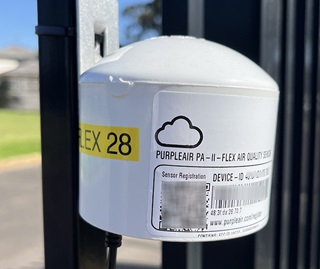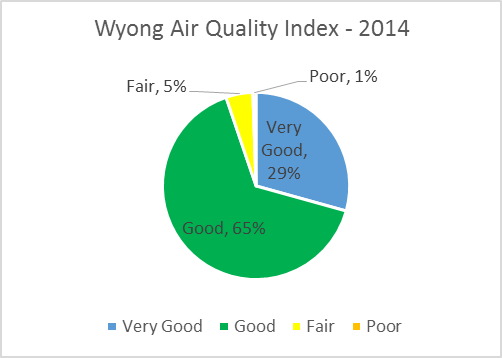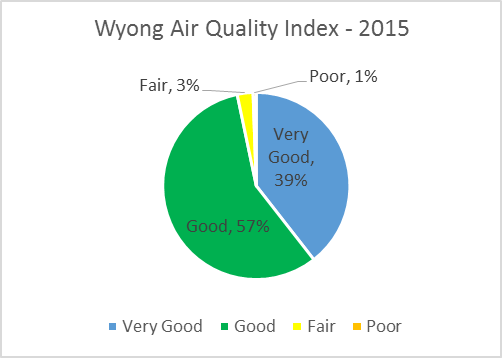Lake Macquarie dust monitoring program
We are installing new air monitors around Lake Macquarie to provide a better picture of outdoor air quality, help identify areas of concern and to help inform future initiatives to protect the environment and human health.

The EPA has recently progressed a number of strategic initiatives across the coal-fired power stations, to address air emissions and increase transparency around the generation and re-use of coal ash. We are installing PurpleAir sensors to further monitor air particles in warmer, drier conditions predicted over summer.
What is a PurpleAir sensor?
PurpleAir sensors are a low-cost sensing device used for community-based air monitoring. These sensors are small devices, about 8.5cm by 8.5cm by 13cm in size. They are easy to attach to outdoor structures and maintain.
For more information about the sensors, go to the PurpleAir website.
What do PurpleAir sensors measure?
PurpleAir sensors provide us with a picture of regional dust.
They use laser particle counters to count the number of airborne particles in the air in a range of sizes.
These particle counts are then used to estimate PM1.0, PM2.5, and PM10 mass concentration in micrograms per cubic meter air or µg/m3. These particle counts are then used to estimate the PM2.5 air quality index (AQI).
Particulate matter describes solid particles suspended in air, including dust, smoke, pollen, and other organic and inorganic particles. These sensors provide us with a picture of regional dust. They do not identify the source or composition of any dust.
Data provided by the sensors can be impacted by smoke from barbecues, wood heaters, extraction fans and air conditioners. When foggy, the sensors may measure water droplets in fog as particles, causing inaccurate readings.
Where is data displayed?
The community can access air quality data from the sensors in near real time using the PurpleAir interactive map. The map identifies an approximate location of the sensor, as well as providing a public display of the data. You can see other sensors installed around Lake Macquarie in real time on the interactive map.
Can PurpleAir sensors be used to monitor for legislative purposes?
No. PurpleAir sensors are designed to assess air quality in a more accessible way for the community than standard air quality monitoring instruments. These sensors are very useful in reporting current air quality to the community but are not certified for monitoring for legislative purposes.
How else do we monitor air quality?
We have additional monitoring equipment and a range of monitoring techniques to provide a robust and comprehensive understanding of the air quality in the Lake Macquarie region.
PurpleAir sensors complement the existing NSW air quality monitoring sites at Morisset, Lower Hunter and Central Coast. These stations continuously measure particles, visibility, some gaseous pollutants (carbon monoxide, nitrogen dioxide, ozone, sulfur dioxide), as well as meteorological variables. Data from the station is reported hourly as air quality category ratings and is included in our Lower Hunter and Central Coast regional summary. For more information about these monitoring stations, go to the Environment and Heritage website.
The local government areas of Lake Macquarie and Wyong are on the central coast of NSW, approximately 100 kilometres north of Sydney.
These areas cover 1,500 square kilometres, with rural valleys to the west and large coastal lagoons to the east. The population of nearly 340,000 is clustered in coastal towns and settlements around the bays and peninsulas.
Major transport routes run north–south and east–west.
Air emission sources
The main sources of air emissions in the Lake Macquarie-Wyong area are from electricity generation plants at Eraring and Vales Point (and previously Lake Munmorah).
Other sources include coal mining, residential wood heating, quarrying, motor vehicles and recreational boats.
You can learn more about emission sources in Lake Macquarie and Wyong by using the EPA's Air Emissions in My Community web tool.
Air quality review
The EPA commissioned a review of air quality of the Lake Macquarie-Wyong region, in response to a community request. The review considered data collected by the NSW Government and industry from September 2013 to June 2016. A detailed review of 2014 and 2015 found that air quality was very good to fair 99% of the time during 2014 and 2015, compared to the NSW Air Quality Index.


The review concluded with the June 2016 report, having demonstrated that air quality in the Lake Macquarie and Wyong areas is consistently good to very good. The Office of Environment and Heritage provides air quality monitoring data for Wyong in near-real time.
Lake Macquarie–Wyong air quality annual and monthly reports
The Lake Macquarie-Wyong air quality annual reports
- summarise all the monthly data for the calendar year up to June 2016.
- analyse trends and compliance with annual average criteria.
The Lake Macquarie–Wyong air quality monthly reports provide a summary of available air quality and meteorological information from industry and government monitoring sites.
Community feedback to the EPA suggests that air quality monitoring data published online by various sources is often complex and difficult to interpret.
The EPA air quality reports present complex air quality information in an easy-to-read format. The report format was developed in consultation with councils, community, industry and NSW Health.
- Lake Macquarie–Wyong Air Quality Annual Report 2015 (PDF 6.6MB)
- Lake Macquarie–Wyong Air Quality Annual Report 2014 (PDF 7MB)
Monthly reports
- See the Office of Environment and Heritage website for air quality monitoring results after June 2016
- Lake Macquarie–Wyong Air Quality Report June 2016 (PDF 2.6MB)
- Lake Macquarie–Wyong Air Quality Report May 2016 (PDF 2.5MB)
- Lake Macquarie–Wyong Air Quality Report April 2016 (PDF 2.5MB)
- Lake Macquarie–Wyong Air Quality Report March 2016 (PDF 2.6MB)
- Lake Macquarie–Wyong Air Quality Report February 2016 (PDF 2.7MB)
- Lake Macquarie–Wyong Air Quality Report January 2016 (PDF 2.7MB)
- Lake Macquarie–Wyong Air Quality Report December 2015 (PDF 2.7MB)
- Lake Macquarie–Wyong Air Quality Report November 2015 (PDF 2.6MB)
- Lake Macquarie–Wyong Air Quality Report October 2015 (PDF 3.1MB)
- Lake Macquarie–Wyong Air Quality Report September 2015 (PDF 2.9MB)
- Lake Macquarie–Wyong Air Quality Report August 2015 (PDF 2.8MB)
- Lake Macquarie–Wyong Air Quality Report July 2015 (PDF 2.4MB)
- Lake Macquarie–Wyong Air Quality Report June 2015 (PDF 2.24MB)
- Lake Macquarie–Wyong Air Quality Report May 2015 (PDF 2.95MB)
- Lake Macquarie–Wyong Air Quality Report April 2015 (PDF 2.87MB)
- Lake Macquarie–Wyong Air Quality Report March 2015 (PDF 2.95MB)
- Lake Macquarie–Wyong Air Quality Report February 2015 (PDF 2.89MB)
- Lake Macquarie–Wyong Air Quality Report January 2015 (PDF 2.93MB)
- Lake Macquarie–Wyong Air Quality Report December 2014 (PDF 2.95MB)
- Lake Macquarie–Wyong Air Quality Report November 2014 (PDF 2.88MB)
- Lake Macquarie–Wyong Air Quality Report October 2014 (PDF 2.89MB)
- Lake Macquarie–Wyong Air Quality Report September 2014 (PDF 2.88MB)
- Lake Macquarie–Wyong Air Quality Report August 2014 (PDF 2.93MB)
- Lake Macquarie–Wyong Air Quality Report July 2014 (PDF 2.89MB)
- Lake Macquarie–Wyong Air Quality Report June 2014 (PDF 2.89MB)
- Lake Macquarie–Wyong Air Quality Report May 2014 (PDF 2.86MB)
- Lake Macquarie–Wyong Air Quality Report April 2014 (PDF 2.92MB)
- Lake Macquarie–Wyong Air Quality Report March 2014 (PDF 2.87MB)
- Lake Macquarie–Wyong Air Quality Report February 2014 (PDF 2.86MB)
- Lake Macquarie–Wyong Air Quality Report January 2014 (PDF 2.86MB)
- Lake Macquarie–Wyong Air Quality Report December 2013 (PDF 3.22MB)
- Lake Macquarie–Wyong Air Quality Report November 2013 (PDF 3.33MB)
- Lake Macquarie–Wyong Air Quality Report October 2013 (PDF 3.02MB)
- Lake Macquarie–Wyong Air Quality Report September 2013 (PDF 2.21MB)